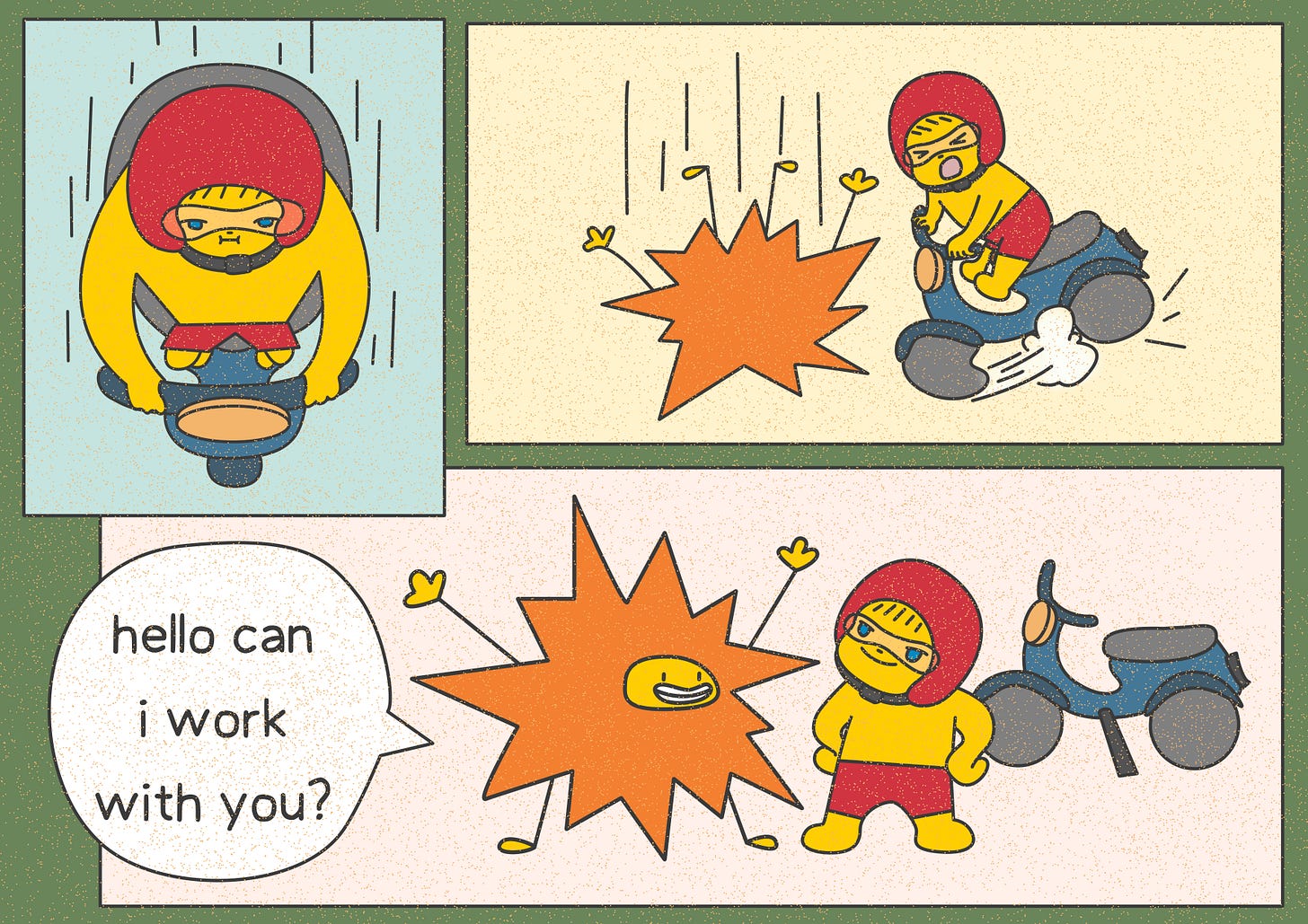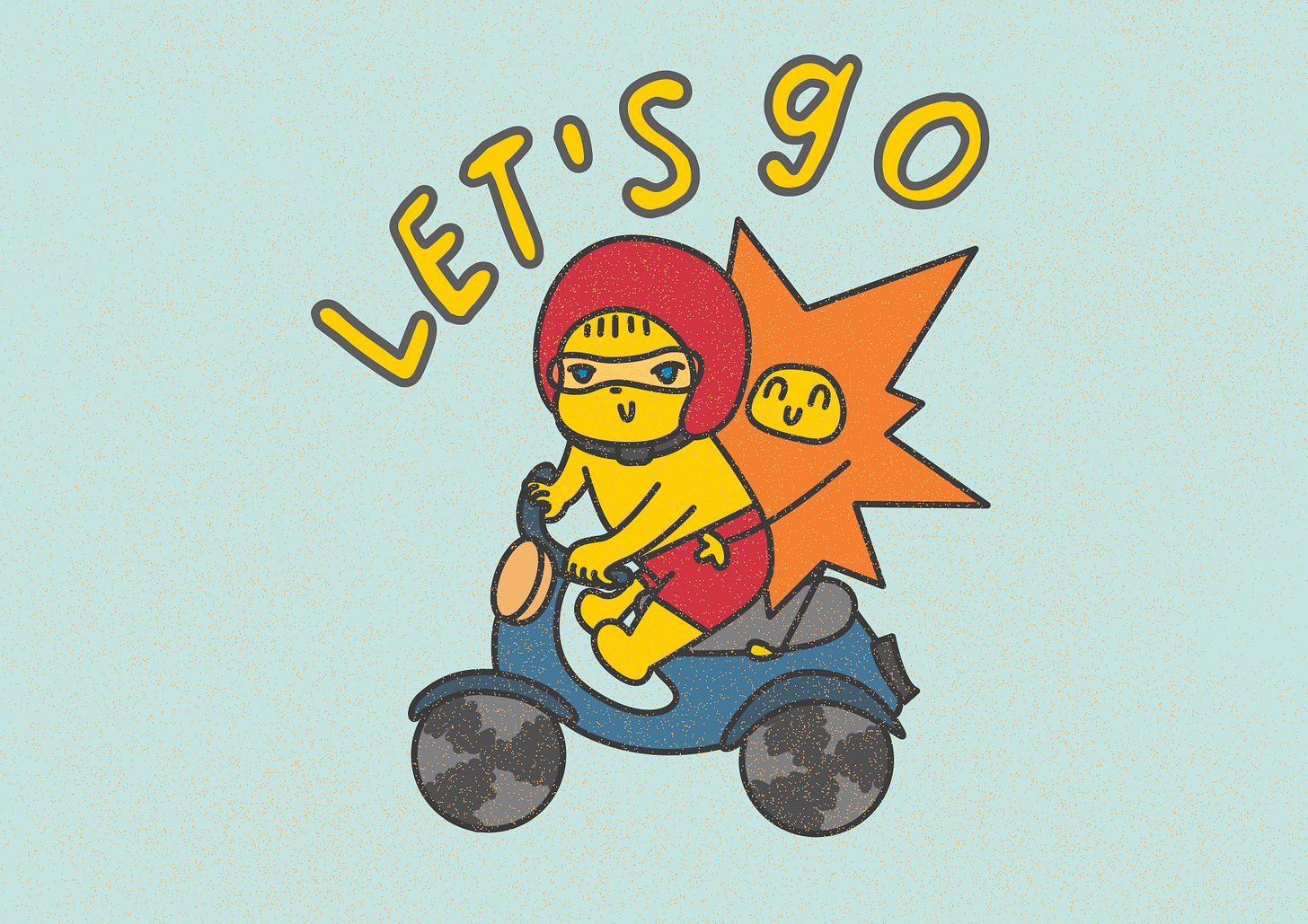I believe that our planet is inhabited not only by animals and plants and bacteria and viruses, but also by ideas. Ideas are a disembodied, energetic life-form - Elizabeth Gilbert.
What I’m going to say may sound stupid but while reading these words from her in my locked bedroom, I caught my eyes darting around. For some reason, reading these words from this author seems illegal. What in the witchcraft is this Gilbert?
However, with too many Piscean planets in my astrological birth chart, anything that mentions “energy” catches my attention in one glimpse (what a sucker for mysticism). So I clung to that line and vowed to not let go until that whole chapter about ideas in her book Big Magic scratched all the itches in my brain.
And it’s become my most favorite definition of Ideas and ways to work with them.
Ideas are Entities.
According to Elizabeth Gilbert, ideas, without a physical body, are conscious living entities. This means they can basically “go” around, and find a collaborator (that’s us humans) to help them accomplish their greatest quest - to be manifested, or in a less hippie term, to come to life.
Ideas are very serious in completing this quest. Therefore, they tend to gear toward available and willing humans. They will call for our intentions. Sometimes the call is so strong that you have to pull over on the street to note down.
In the case of Lin Manuel Miranda, the inventor of Hamilton Musical, the idea nudged him so strongly that he only dropped by at his friend’s birthday for 10 minutes, wished the person well, excused himself to travel back home, and dived into the idea on the subway. That’s how My Shot came to life (that’s one hell of a song).

Working with an Idea.
Let’s reiterate the point above
Ideas tend to gear toward available and willing humans
To collaborate with an idea, according to Gilbert, we need to be available and willing. I translate that into:
We need to be spacious.
This is not just mapping out a physical space - the right coffee shop, the right room decoration - to work with ideas.
This also means letting your mind be more spacious (something I gain by meditating and… riding on the road). This means setting a designated time slot (something
does by setting up his sacred creative time). This means getting what’s stuck inside out of your system (something Haruki Murakami does by running)You wouldn’t visit a friend’s house if the place is too occupied. Ideas won’t visit if our minds, time, and surrounding environment are too busy.
We need to be patient.
Some ideas can easily come to life. Some unfortunately don’t. The willingness to work with an idea doesn’t stop at cheerfully welcoming it in, it extends to the process of manifesting one.
A lot of the time we lose our patience - “This idea chooses me, why is it so stubborn to get out?!”
Lin-Manuel Miranda took 7 years to write Hamilton Musical. J.R.R. Tolkien took 12 years to write Lords of The Rings. You get the idea. From ideas to artwork can range from being as smooth as butter or being a pain in the ass. It’s not guaranteed that the process and the outcomes are satisfying. But it’s promised that we won’t leave empty-handed. To me, that’s worth a try.
Tom Waits describes his process of working with song ideas
Some songs, he said, will come to him with an almost absurd case, “like dreams taken through a straw.” Other songs, though, he has to work hard for, “like digging potatoes out of the ground.” Still other songs are sticky and weird, “like gum found under and old table,” while some songs are like wild birds that he must come at sideways, sneaking up on them gently so as not to scare them into flight
We need to acknowledge when ideas pay a visit.
In Bird By Bird, Anne Lamott mentions how she always carries her index cards around and scribbles down any observations/ideas that she has. I surmise this stems from her acute understanding of the agony of losing an inspiration.
I’d get home, remembering that I had thought of or heard the perfect image or lines…. And I’d stand there trying to see it, the way you try to remember a dream, where you squint and it’s right there on the tip of your psychic tongue but you can’t get it back. The image is gone. That is one of the worst feelings I can think of, to have had a wonderful moment or insight or vision or phrase, to know you had it, and then to lose it. So now I use index cards. - Anne Lamott.
I’ve let many ideas slip because I was too overwhelmed with life, or K-dramas - Many times I was unavailable and missed the signal. Even when I have time and mental space for ideas to get in, I often find myself telling them: “I’ve thought of you once. I’m sure I can think of you another time”. But viewing ideas as entities means stopping thinking as if they’re born out of me. Like visitors, ideas can always find a new host.

Plot Twist: You don’t always have to work with an idea.
Being welcoming, patient and humble doesn’t mean we always have to collaborate on an idea. Sometimes it’s the other way around. Viewing an idea as an entity, we know that we can let it in, or draw boundaries, like how we do with a person.
I believe there’s a very thin line between being willing to work with an idea and being so eager to work with an idea that you get drowned in artistic suffering. In the former, you co-create with the idea while in the latter, you're enslaved by it.
There are ideas that I know for sure I don’t have enough cognitive ability to write about. For example, I once thought it’d be so so fun to write about how ordinary items (ie. traffic lights) we see in life work, about the mechanism behind them. Or about the history of feminism. I just know for sure I can’t write about those topics, but I know ones who can, and bring the ideas to them.
There are also times when I worked with an idea halfway, and ended up saying bittersweet goodbyes. For now, my general guess of an unhealthy collaboration is one that tortures your well-being. It’s the one that when you work with, your life seems to be getting worse - your body doesn’t feel well, you feel lonely a lot of the time, anger and resentment is your default mood. The symptoms are very similar to the ones that happen in toxic relationships.

This is how Elizabeth Gilbert says no to ideas
“I’m honored by your visitation, but I’m not your girl. May I respectfully suggest that you call upon, Barbara Kingsolver?” (I always try to use my most gracious manner when sending an idea away - you don’t want word getting around the universe that you’re difficult to work with)
Above all, MAGIC!
Gilbert mentions the word “magic” many times in her Big Magic book (duh!). As a reader, I was skeptical. I didn’t get a lot of these magical visits from ideas. For me, a lot of the time ideas come from books. Because of that, there’s this hardwired way of thinking that the visits of ideas are merely products of consuming information.
And while that’s one truth, another truth lies in magic.
Yes, you may get an idea from a book. But..
How did you stumble on that book? - Oh yes, a friend of yours recommended
Why did she recommend it? - Ah, because you checked in on her one day about her relationship with her mom and she referred to the book during the conversation.
Why did you check in on her? - Ohhhhh, that you don’t really remember. The idea came when I was taking a shower.
How did the idea come when you were taking a shower? - Sometimes, we can answer this with logic. And other times, there’s a humble acceptance that we don’t have any freaking clue. Of course, we don’t. It’s MAGIC.
The idea may have officially introduced itself while you were reading the book. But it had industriously paved the way to you, long before your awareness of it.
Maybe your Idea friend likes a coffee place in District 1 in HCMC where there’s that one table for two that you can put your stuff on the other seat to block others coming in, and that looks out to the window. So whenever to come to the place, ideas start visiting. Any explanation? Maybe the AC is great there, or maybe the drink is superb. And maybe it’s MAGIC.
It’s important to acknowledge MAGIC in our creative process because it allows us to immerse in those moments of awe—the chills, the goosebumps, the astonishment. And while doing it, we work with the elusive, the unseen, and the mystical elements. Logic only won’t be able to explain.
Treating ideas as entities, talking to them, and shaking hands with them may seem “crazy” for the cynical. For us creatives, and by that I mean creatives in all fields, I pray that we’ll be as available and willing to experience the magic as possible.




I do believe in Magic, so please keep using them to make more articles like this.
I really like this post